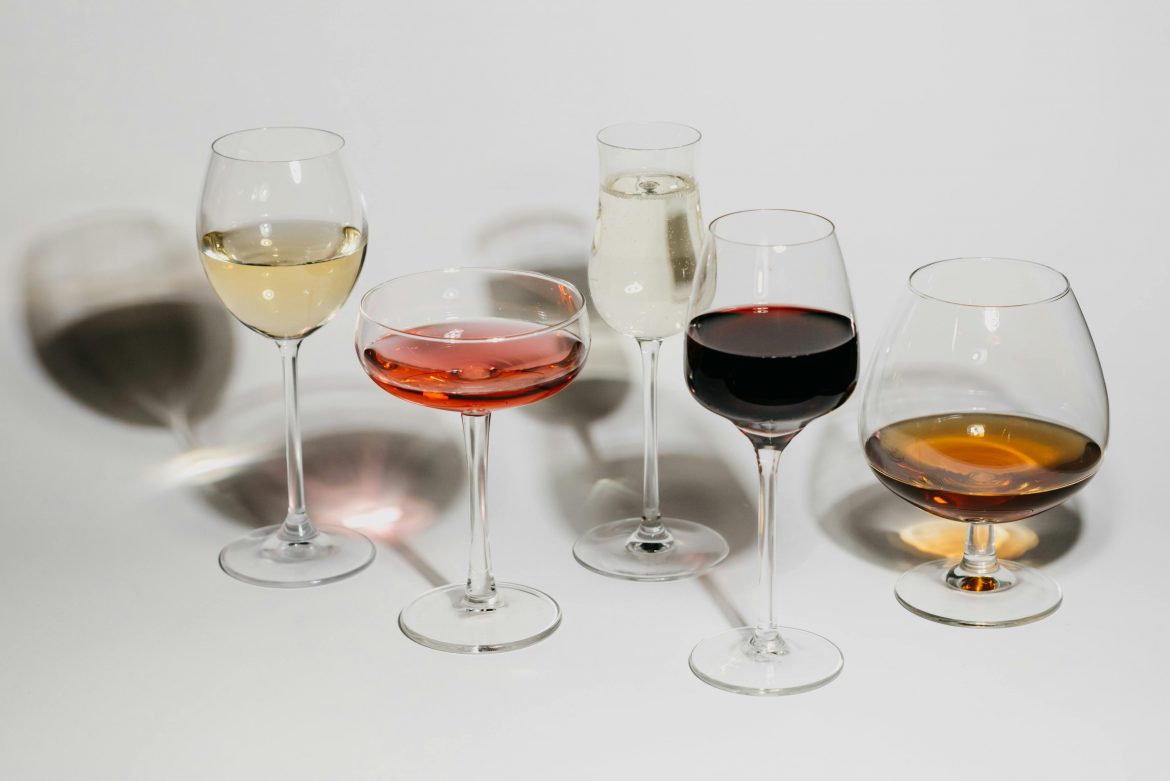I’ve always believed that the right glass can make or break the experience of a good drink. Think about it: sipping from a bottle of soda doesn’t feel quite the same as pouring it into a tall glass filled with ice.
Wine and Champagne are no different – the vessel you choose influences how they taste, smell, and even feel. It’s not about fuss or formality; it’s about letting the drink shine the way it was meant to.
Here’s a simple breakdown of how the shape and size of your glass can change the way you enjoy your favourite pour.
Read more: Wine tasting for beginners: The only guide you’ll ever need
The basics of wine glasses
Wine glasses are made up of three parts: the bowl, the stem, and the base. The bowl is where the wine sits, the stem keeps your hands away from warming the drink, and the base keeps it steady. The difference between red and white wine glasses mostly comes down to the bowl: wider for red, narrower for white.
Why? Red wines need space to breathe. Their flavours are fuller and more robust, and a wider bowl allows air to soften those bold tannins while releasing aromas. White wines, on the other hand, are lighter and crisper, so they don’t need as much room to open up.
Temperature also plays a role. White wines are best chilled, which is why white wine glasses often have longer stems – they stop your hands from heating the bowl. Red wines are usually served at room temperature, so warmth from your hand doesn’t matter as much.
Red wine glasses
Red wines are not all the same, and neither are their glasses. Here are the main types:
- Bordeaux glasses: Best for full-bodied reds like Cabernet Sauvignon, Merlot, Syrah, and Bordeaux blends. These glasses are tall with a wide bowl, giving powerful wines room to breathe while softening their bold fruit and tannins.
- Medium-bodied glasses: A little smaller, these glasses suit wines like Shiraz, Chianti, Malbec, or Rhône blends. Their narrower rims balance out spicier, more pronounced flavours, making the wine smoother on the palate.
- Burgundy glasses: Designed for lighter reds such as Pinot Noir, these glasses have a rounder bowl and wider rim. They bring out delicate aromas and highlight subtle sweetness.
Fun fact: some wine lovers even prefer to serve Champagne in a Burgundy glass for the way it enhances aromas.
White wine glasses
White wines may seem simpler, but glass shape still matters.
- Riesling glasses: Slimmer bowls and longer stems are perfect for crisp whites like Riesling and Sauvignon Blanc. The narrow rim helps concentrate citrusy, zesty notes while keeping the wine cool.
- Chardonnay glasses: Full-bodied whites, especially oaked Chardonnays, benefit from a slightly wider bowl. This shape allows rich buttery and fruity aromas to open up, giving you a rounder, more complex taste.
Champagne
When you picture Champagne, you probably imagine tall, elegant flutes. While they do look glamorous and preserve bubbles well, they aren’t always the best choice.
- Flutes: Great for affordable bottles where you mainly want bubbles to sparkle. Long stems also help keep the drink cool.
- White wine glasses: Surprisingly, a standard white wine glass is often the best choice for vintage or high-quality Champagne. The wider bowl lets the aromas open while the narrower rim still holds onto the fizz.
- Coupes: Chic and retro, but not practical. The shallow, wide design means bubbles disappear quickly. Keep these for cocktails like a French 75, where Champagne is just the topper.
So, which glasses do you really need?
At home, you don’t need a cupboard filled with specialist stemware. A good set of red wine glasses, a set of white wine glasses, and a few flutes will cover most occasions. If you want to elevate things a little, add a couple of Burgundy glasses – they work beautifully for both lighter reds and Champagne.
At the end of the day, wine and Champagne are meant to be enjoyed, not overcomplicated. The right glass simply helps you get the best from every sip – whether you’re hosting a dinner, toasting a celebration, or unwinding at the end of the week.
ALSO SEE: 5 CLEVER USES FOR LEFTOVER WINE
Image: Pexels

